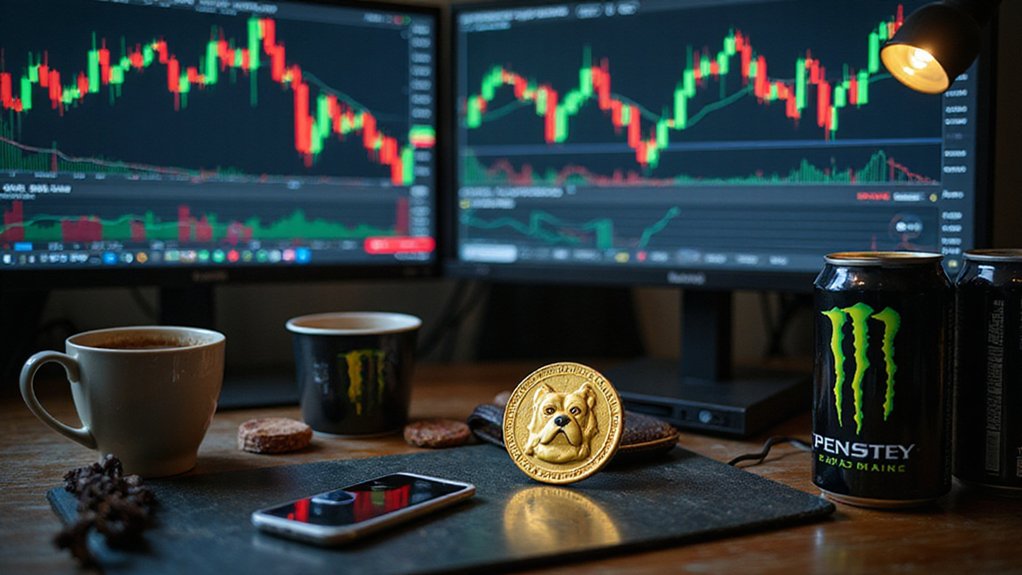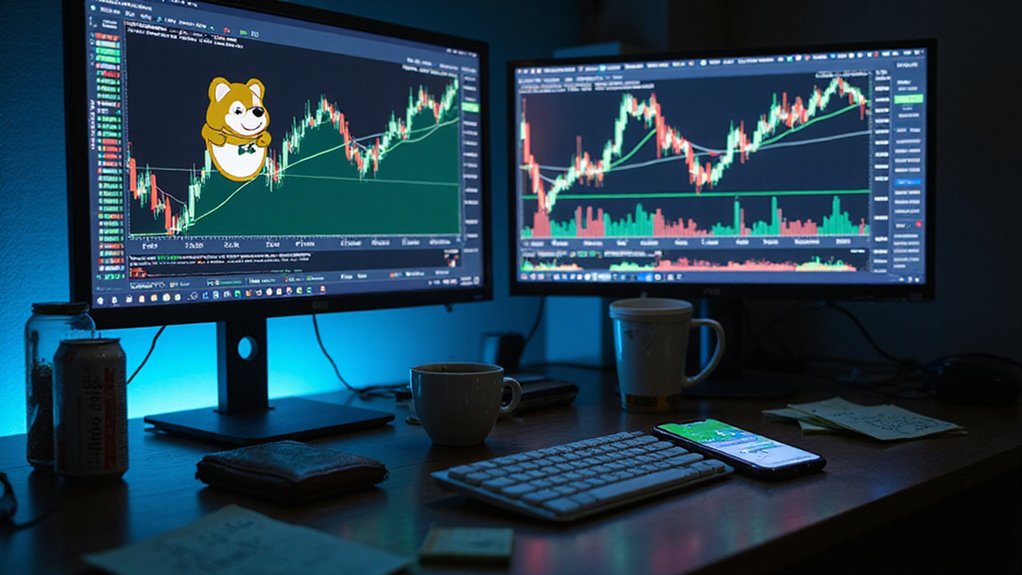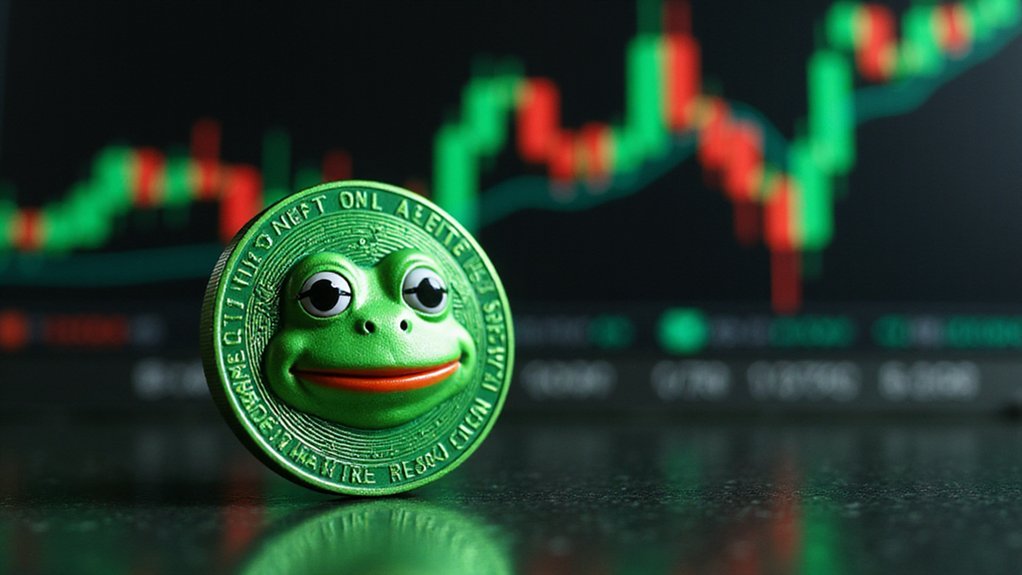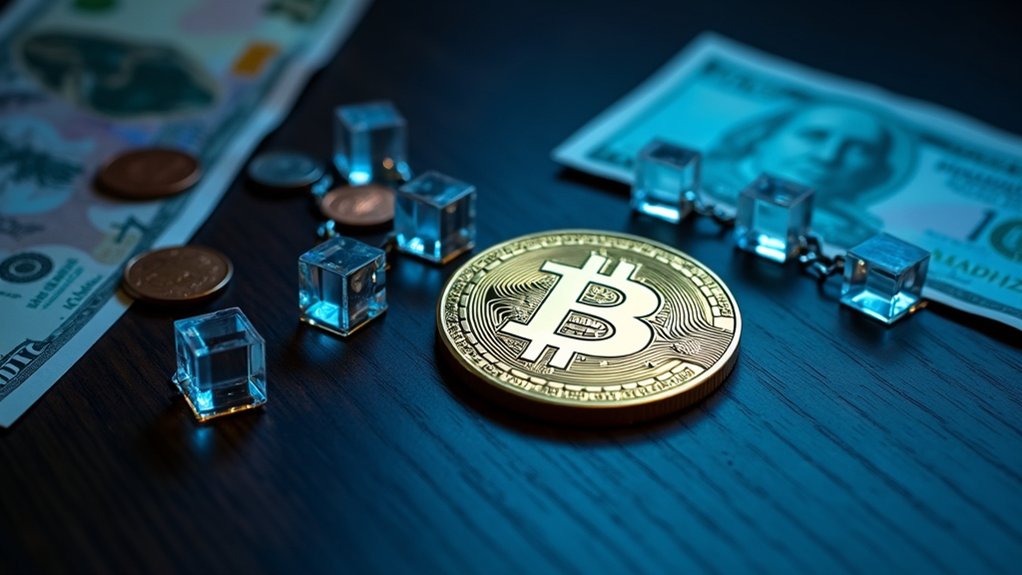Trading meme coins requires securing a compatible wallet, connecting to specialized exchanges, and monitoring social sentiment across platforms like Twitter and Discord. Successful traders implement strict risk management—using stop-loss orders and allocating only disposable funds to these highly volatile assets. Unlike traditional investments, meme coins derive value from community enthusiasm and viral potential rather than fundamentals. The difference between substantial gains and complete losses often hinges on timing, technical analysis, and a healthy dose of skepticism.

Why have traditional investment vehicles suddenly taken a backseat to cartoon dogs and frogs with inexplicable market capitalizations in the hundreds of millions? The cryptocurrency market’s most peculiar offspring—meme coins—has transcended its novelty status to become a legitimate (if wildly speculative) trading category attracting billions in daily volume.
Meme coins, unlike their utility-focused cryptocurrency cousins, derive value primarily from community enthusiasm and cultural relevance rather than technological innovation.
Trading these volatile assets requires a specialized approach.
Traders must first secure a compatible cryptocurrency wallet—MetaMask for Ethereum-based tokens or Phantom for Solana ecosystems—and connect to exchanges where these coins are listed.
The barriers to entry are remarkably low; one need only transfer funds, navigate to the desired trading pair, and execute purchases.
Technical analysis, while helpful, often takes a backseat to social sentiment monitoring.
Savvy meme coin traders obsessively track social media platforms, monitoring mentions, engagement metrics, and celebrity endorsements that frequently precede dramatic price movements.
The market operates less on fundamentals and more on narrative momentum.
Risk management becomes paramount in an environment where 1,000% gains and 99% losses occur with alarming regularity.
Stop-loss orders, small position sizes, and portfolio diversification aren’t merely prudent—they’re essential survival tactics in a market where fortunes materialize and evaporate with equal velocity.
The regulatory landscape remains nebulous, with authorities increasingly scrutinizing these speculative assets.
Traders should remain cognizant that many meme coins represent sophisticated pump-and-dump schemes or exist in regulatory gray areas vulnerable to sudden enforcement actions.
For those undeterred by the substantial risks, the meme coin market offers unparalleled liquidity and volatility—a day trader’s paradise untethered from traditional market correlations.
The prudent approach involves treating these assets as high-risk speculation rather than investments, allocating only funds one can afford to lose entirely, and recognizing that today’s viral sensation may become tomorrow’s cautionary tale with remarkable swiftness.
Popular trading venues include both decentralized exchanges and major centralized platforms, with daily volumes sometimes exceeding $6 billion in global transactions.
Caution is particularly warranted following the dramatic peaks and valleys seen with coins like HAWK, which shot to a $490 million market cap before collapsing amid allegations of fraudulent activity.
Unlike Bitcoin or Ethereum, these internet culture-based cryptocurrencies often gain popularity through viral social media trends rather than utility or technological advancement.
Frequently Asked Questions
What Risks Are Unique to Meme Coins Compared to Other Cryptocurrencies?
Meme coins carry distinctive risks beyond typical cryptocurrencies: extreme volatility driven by social media sentiment rather than fundamentals; absence of intrinsic value or utility; vulnerability to market manipulation (particularly pump-and-dump schemes); regulatory ambiguity without securities protections; and liquidity constraints that can trap investors during downturns.
Their uncapped supplies and lack of development roadmaps further distinguish them from established cryptos—essentially transforming investing into a psychological game where fundamentals become quaintly irrelevant.
How Do Social Media Influencers Impact Meme Coin Prices?
Social media influencers function as potent market catalysts for meme coins, triggering immediate price volatility through their endorsements.
Celebrity promotions legitimize otherwise speculative assets, sparking waves of FOMO-driven investment.
Ironically, data reveals that influencers with larger followings (200k+) correlate with the worst performance outcomes—their promoted tokens typically hemorrhage 89% of value within three months, suggesting a perverse relationship between influencer prominence and investor losses.
Are Meme Coins Taxed Differently Than Traditional Cryptocurrencies?
Meme coins face identical tax treatment to traditional cryptocurrencies across major jurisdictions—a fact that surprises many traders dazzled by Shiba Inu avatars and rocket emojis.
The taxman remains stubbornly unimpressed by internet culture, classifying both as property subject to capital gains upon disposal and income tax for staking or mining rewards.
The regulatory apparatus makes no distinction between a blue-chip blockchain asset and the latest canine-themed token.
What Warning Signs Indicate a Meme Coin Might Be a Scam?
Meme coin red flags include anonymous development teams (the blockchain equivalent of a masked vendor at a dark alley market), unrealistic promises of astronomical returns, suspicious tokenomics with trillion-unit supplies, lack of audits or security measures, and artificial market activity.
The telltale signs often manifest in excessive hype coupled with minimal substance—a perfect recipe for separating enthusiastic novices from their funds through the time-honored tradition of digital sleight-of-hand.
How Quickly Can Meme Coins Lose Their Entire Value?
Meme coins can implode with breathtaking velocity.
Most spectacularly, 80% of promoted tokens shed 70% of value within a week, while 76% lose over 90% within three months.
Complete value evaporation often occurs within 6-12 months, with approximately 97% failing within a year.
During market downturns, this timeline accelerates dramatically—some coins have effectively zeroed out overnight following rug pulls or liquidity crises.









